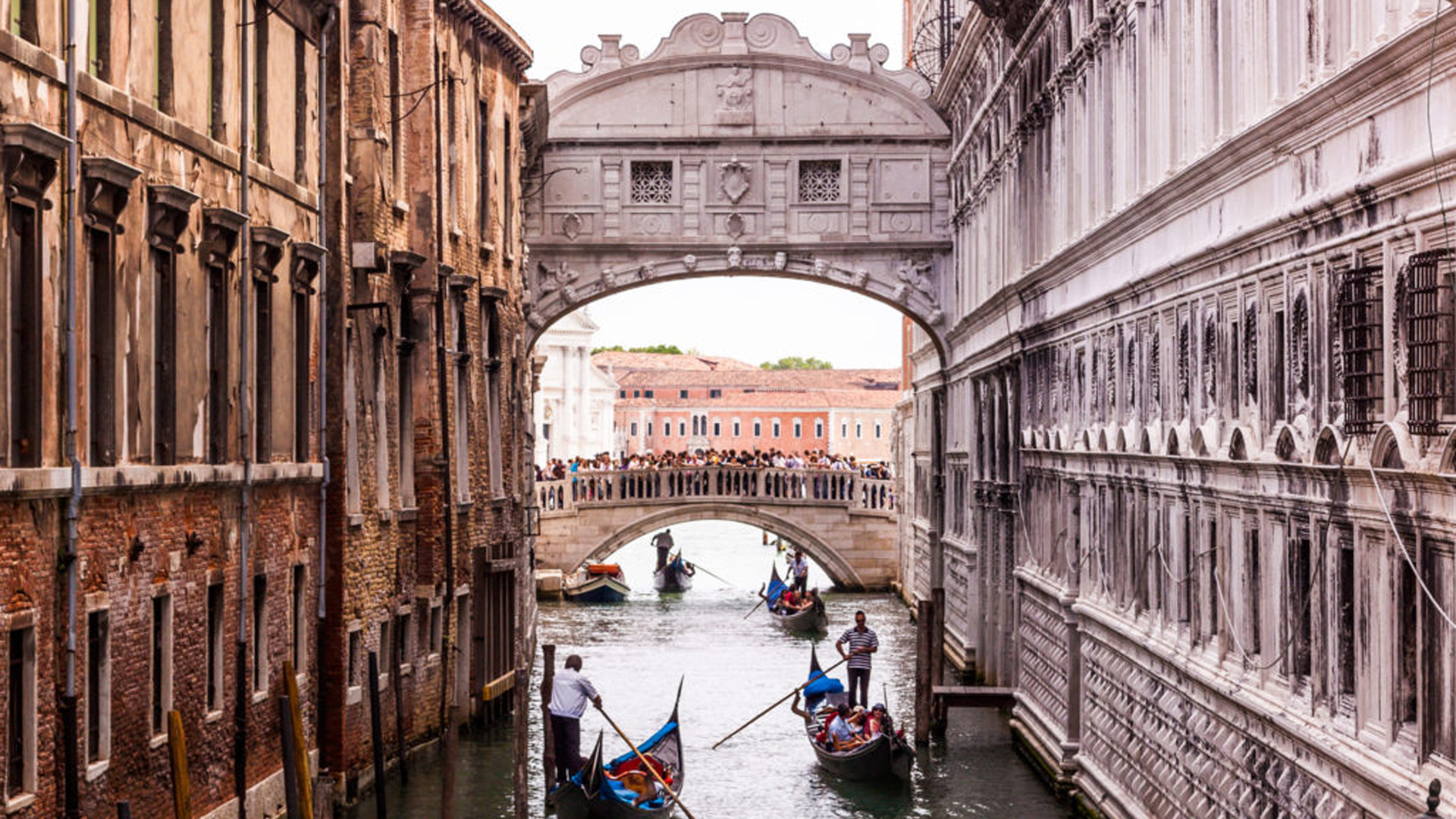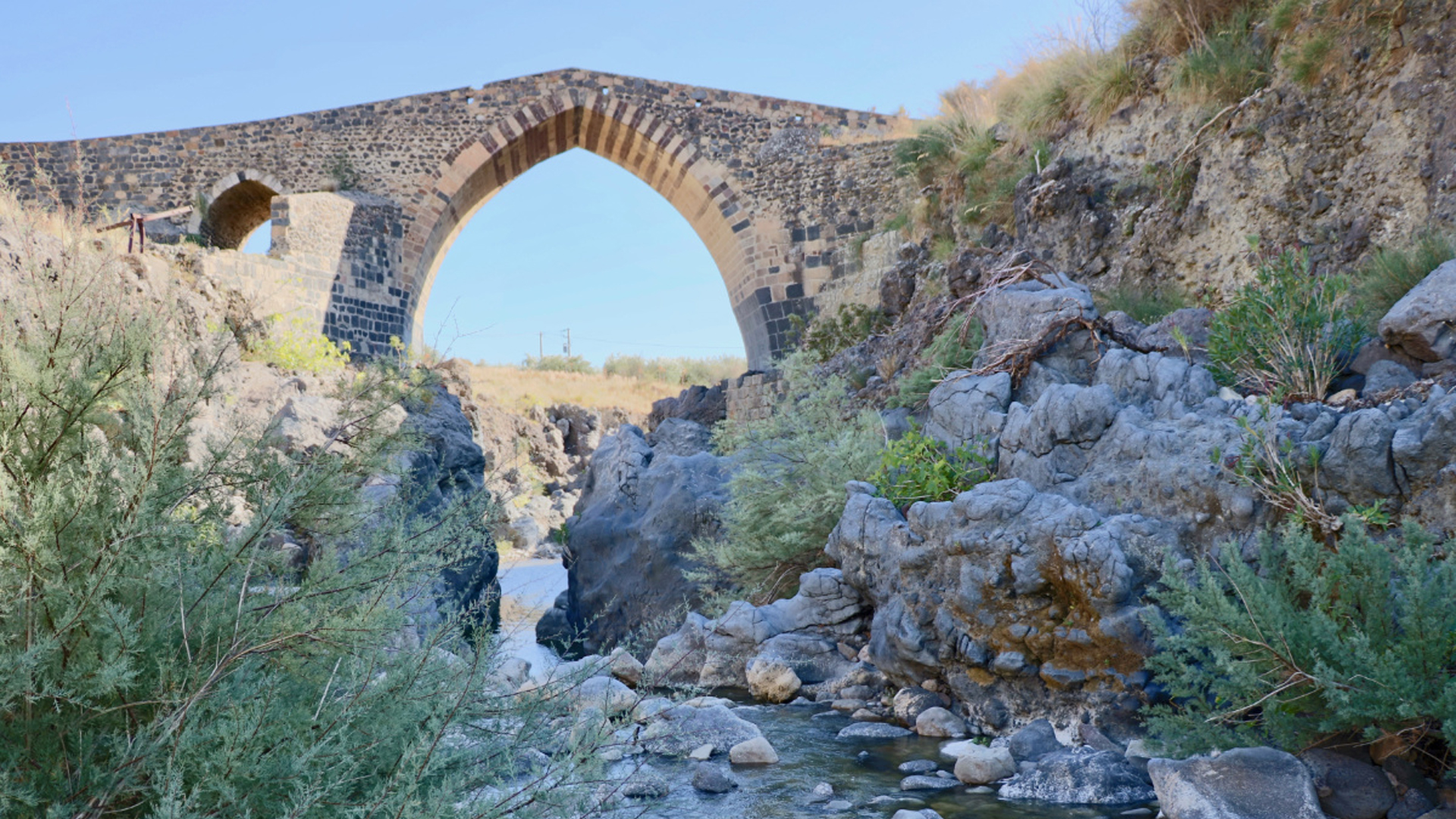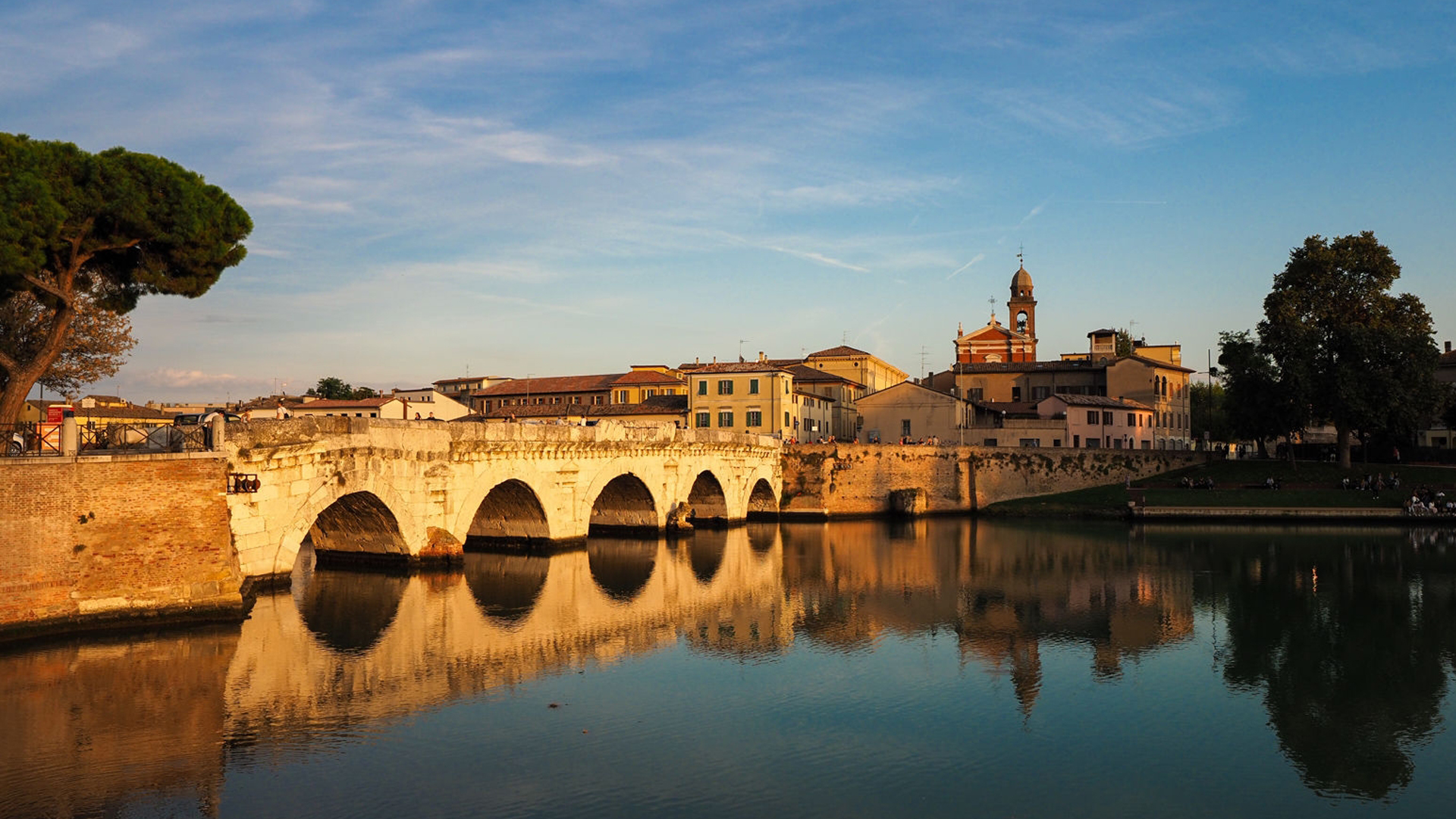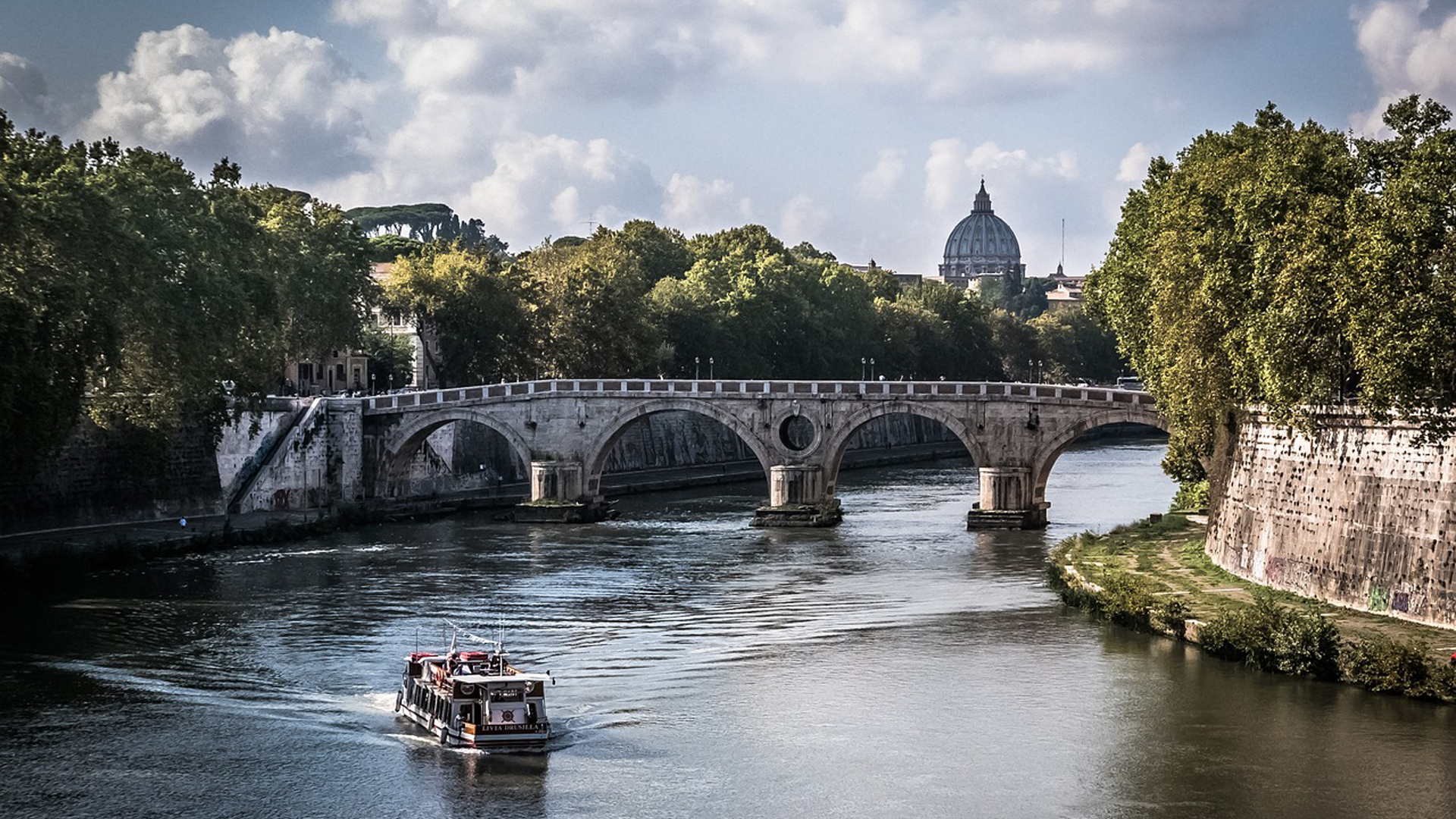Ponte Milvio

Ponte Milvio likely earned its name from the Mulvia family of Rome who commissioned it. This name appears for the first time in writings by Roman historian Titus Livius about battles in 207 B.C. and 312 A.D. Perhaps the most beloved of Rome’s ancient bridges, Ponte Milvio has always been an extremely important passage connecting Rome to the north. During the Middle Ages it became the main access road to Rome and for this reason was fortified. Over the centuries it was damaged and restored several times. What hasn’t changed is the fact that it is the first Roman bridge to be submerged when the Tiber River floods. Since Medieval times this has given the bridge its popular name of Ponte Mollo, a word taken from the colloquial Roman expression “finish soaking”!
Ponte dei Sospiri or Bridge of Sighs

Pretty as it looks, this bridge does not have a shred of romance to its story. The much-photographed enclosed bridge, named by English poet Lord Byron Bridge of Sighs, was the passageway where prisoners would sigh at their final view of stunning Venice through the window before being taken to their prison cells at Prigioni Nuove (New Prisons), built between 1589 –1616.The bridge over a narrow canal connects the New Prisons to the interrogation rooms of the Doge’s Palace. The Doge’s nearby Old Prisons are infamous for once holding Giacomo Casanova, the seducer and adventurer who managed to escape his cell in 1755.
Ponte Vecchio, Bassano

Consider it the sixteenth-century predecessor of the Bridges of Madison County - this rare covered wooden bridge that traces its origins to a humble wooden bridge built in 1209 has been destroyed and rebuilt many times. The uniquely designed covered version was built by renowned Renaissance architect Andrea Palladio in 1569. Chronicles tell that while the bridge survived several floods of the wild Brenta River, in 1749 it was “blown away like a straw basket.” This Bassano landmark is also known as the Alpine Bridge because of the historical events it evokes: During World War I, Italy’s Alpini Corps—the specialist mountain infantry—crossed the bridge on its way to the front of the battle against the Austro-Hungarian Empire. A famous Italian song dating back to the war sings, “On the bridge of Bassano, we will shake our hands.”
Ponte della Maddalena or Devil’s Bridge

Nicknamed the Devil’s Bridge for the many legends surrounding it, this stunning bridge crosses the Serchio River near a village north of Lucca in Tuscany. The structure was built in the eleventh century, probably commissioned by Countess Matilda of Canossa, to allow travelers and pilgrims to reach the city of Lucca and the Via Francigena, the famous pilgrimage route to Rome. Named Ponte della Maddalena in the sixteenth century, the bridge as well as the nearby village have been restructured many times.
Ponte dei Saraceni

The Saracen Bridge in Sicily’s Catania province stands nearly 50 feet tall over the lava gorges of the river Simeto. The current structure dates to the period of Sicily’s Norman domination in the twelfth century, and many studies agree that a bridge already existed at the site in Roman times. The bridge played a strategic role, placed on the communication route that ran from Troina, the first capital of the Kingdom of Norman Roger I of Sicily, to Catania, one of the most important and beautiful centers of the island.
Ponte di Tiberio

Rimini is a touristic city on the coast known as Riviera Romagnola, by the Adriatic sea, north of Italy. Its city center is a lovely jewel of Roman architecture. In particular the bridge on the Marecchia River. Also known as Augustus Bridge, this bridge features five semicircular arches made of white Istrian stone with an average span length of 26 feet. Construction work started during Augustus‘ reign in 14 A.D. but was finished under his successor, Tiberius, in 20 A.D. An inscription thus identifies the structure as “given by both emperors”. The bridge is still open to pedestrian and vehicular traffic with the exception of heavy goods vehicles. In 2014, the Tiberio Project aimed to reorganize the road system near the bridge and redevelop the entire block of San Giuliano a Mare in Rimini.
Barbara Benzoni
Barbara Benzoni was born in Milan and lives between Rome and Tuscany. She is devoted to USA, the land of courage and innovation. She’s Peter's super-lucky mum and Ale's wife. Cinema, art, good food and only beautiful things are the themes of her existence. With a degree in Italian literature and a Masters in Sports Management she can both enjoys books and basketball matches. In 25 years she has been organizing sport events all over the world and she’s been lucky enough to meet the greatest champs ever. Curiosity in everyday life and people are her drivers. Her personal icon is Mohammed Ali : "It's not bragging if you can back it up".


